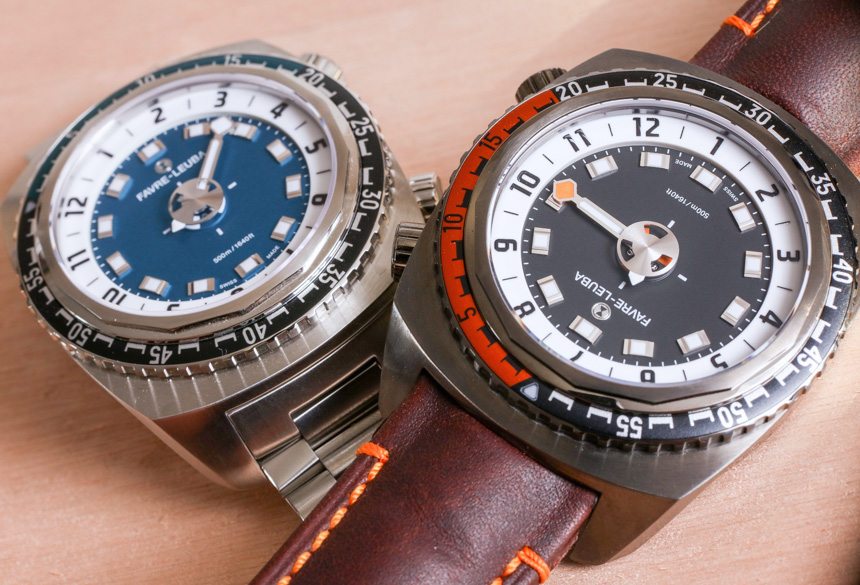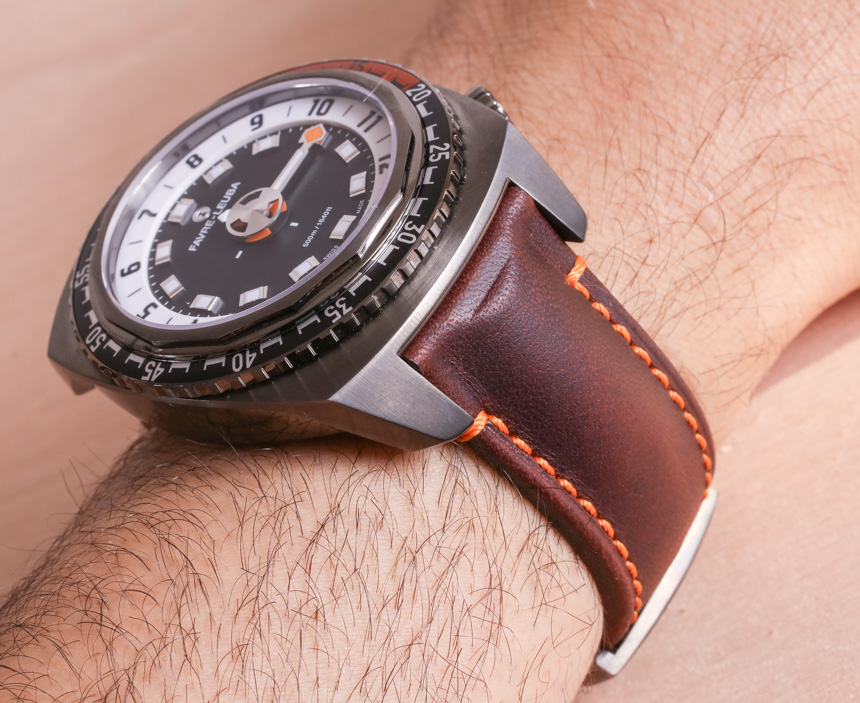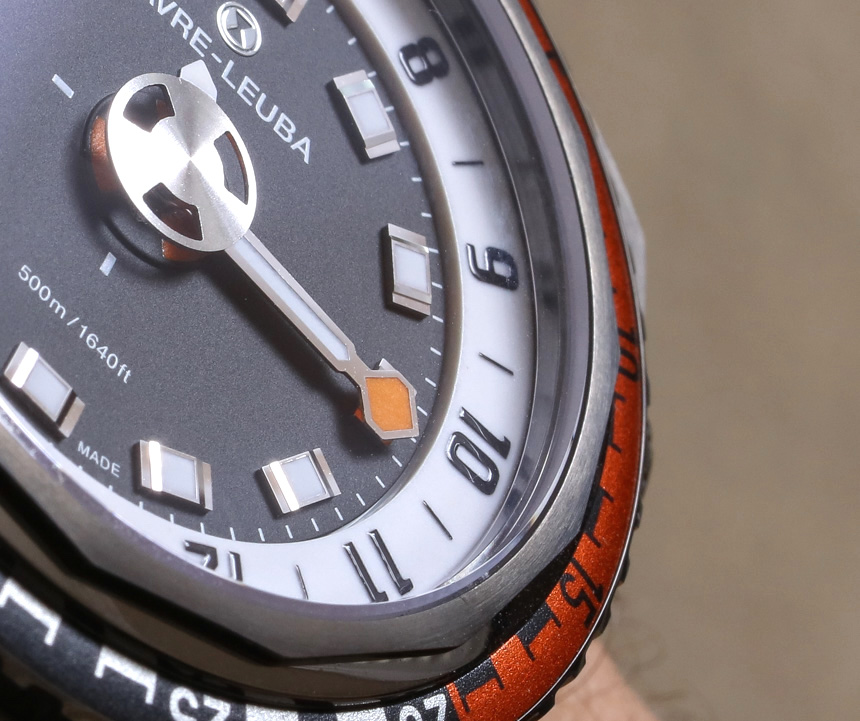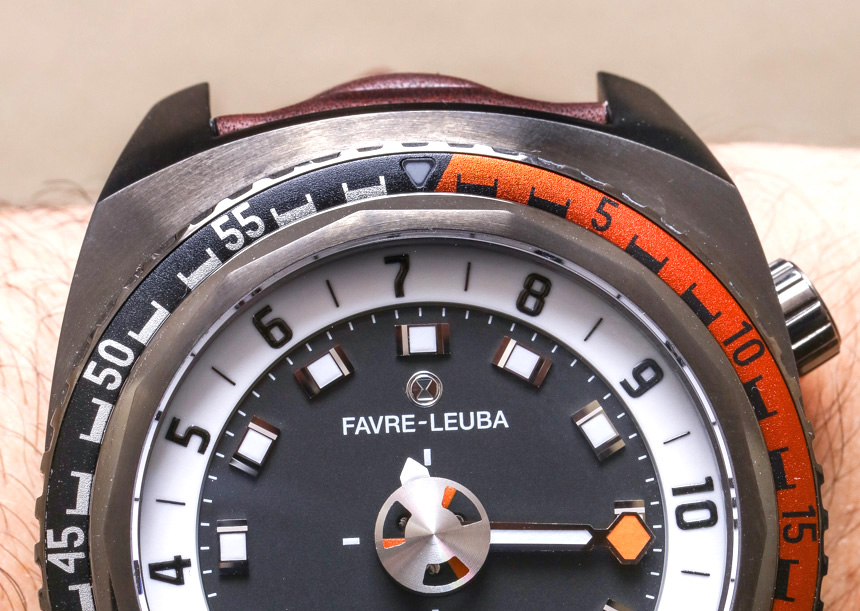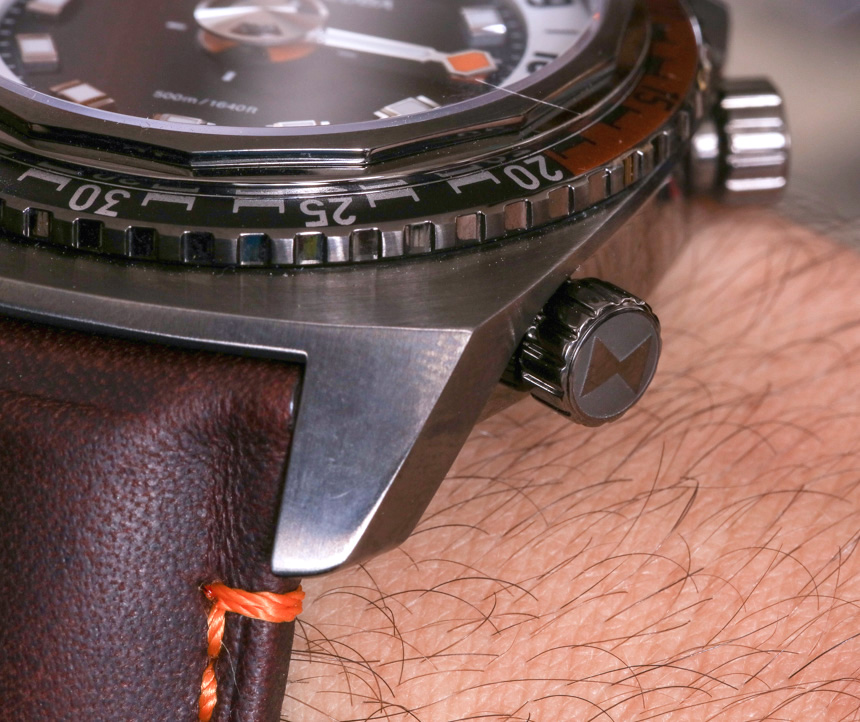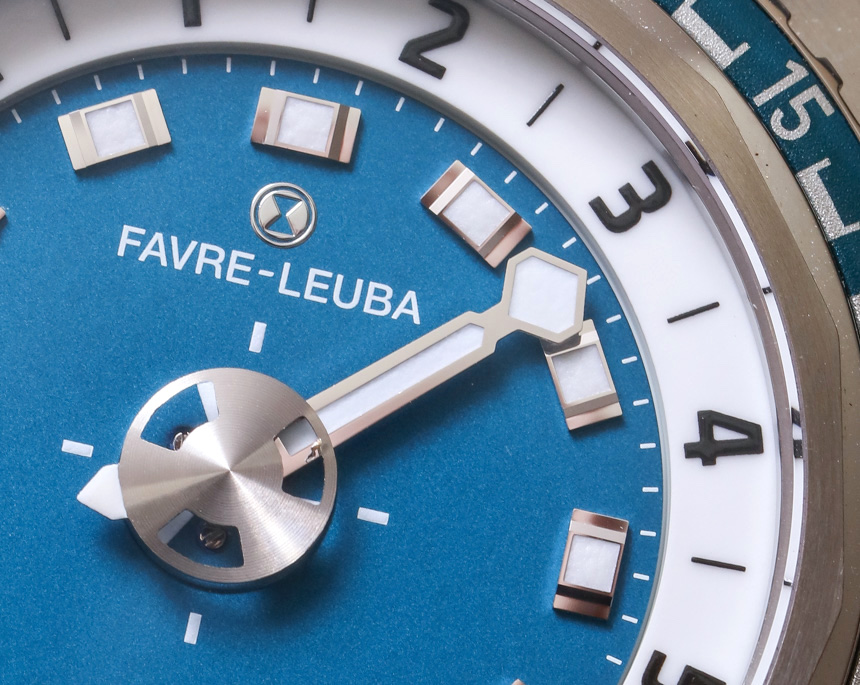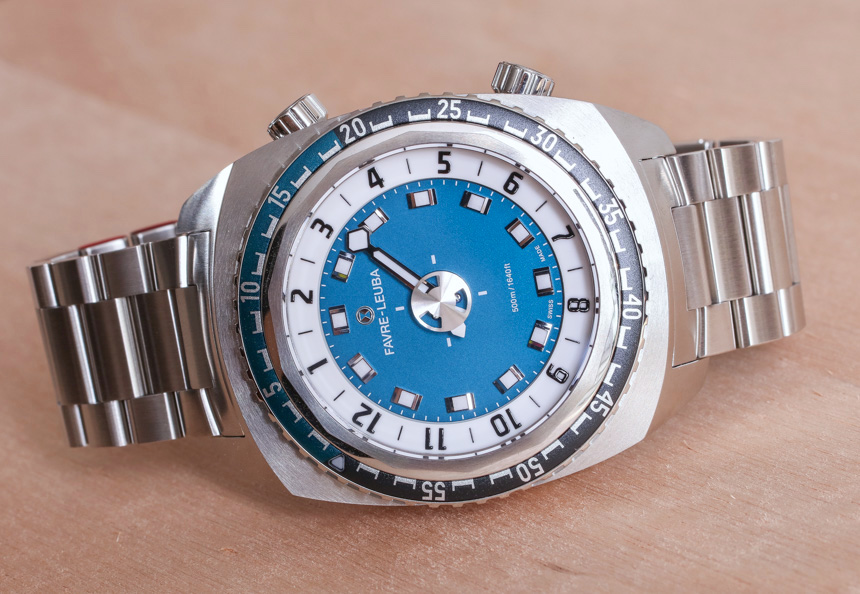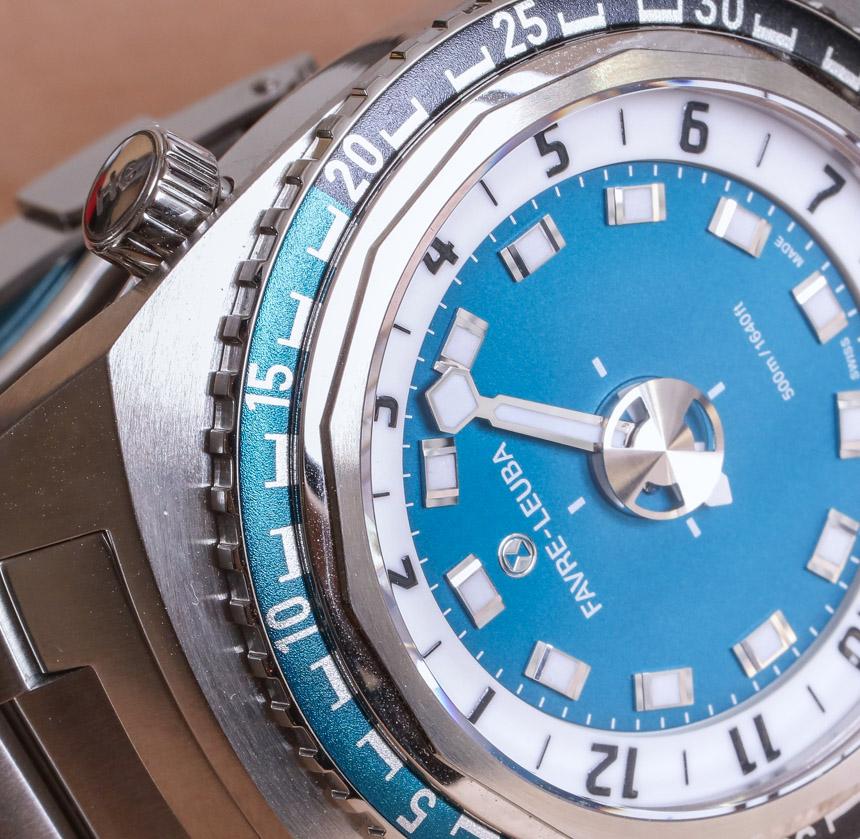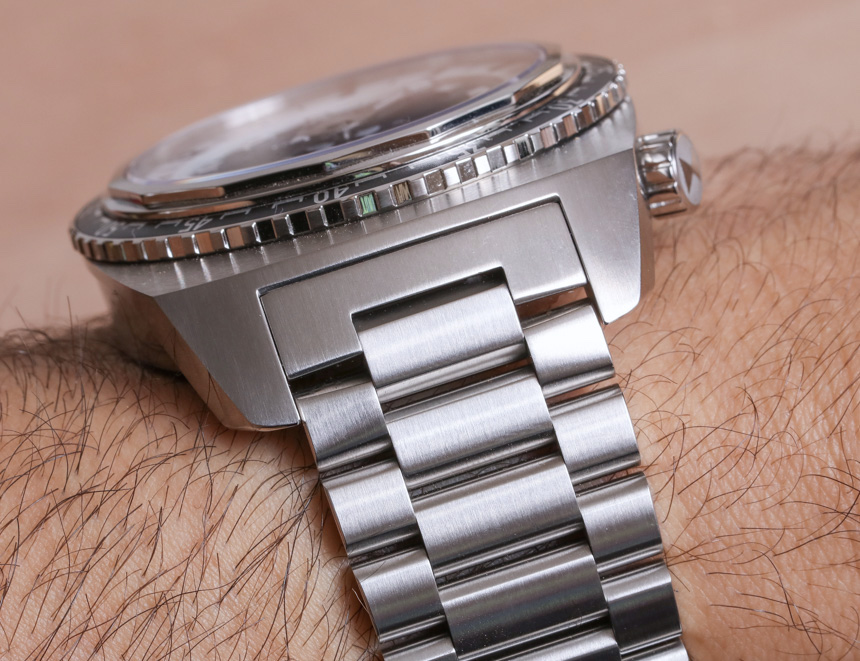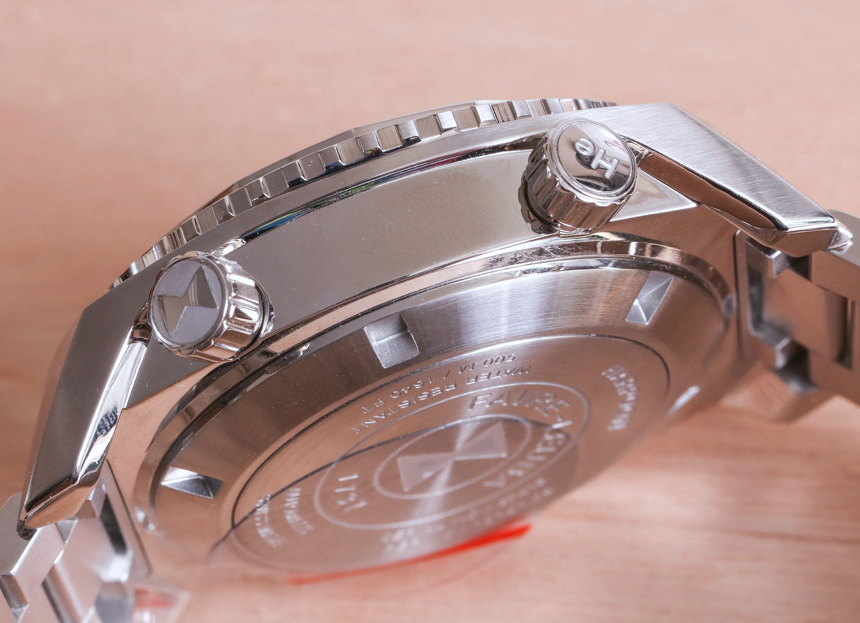
Dual opposing crowns sit on the right side of the case, with the lower one being used to adjust the time. The upper crown is the manual helium release valve – that again you’ll likely never use. Just be sure to have it screwed in when going into water (or at pretty much all times for that matter). The neatly integrated straps come in a welcome variety, as well as the choice of a matching steel metal bracelet. Unfortunately, for now the bracelet doesn’t come in black – which I think would have been really cool looking.
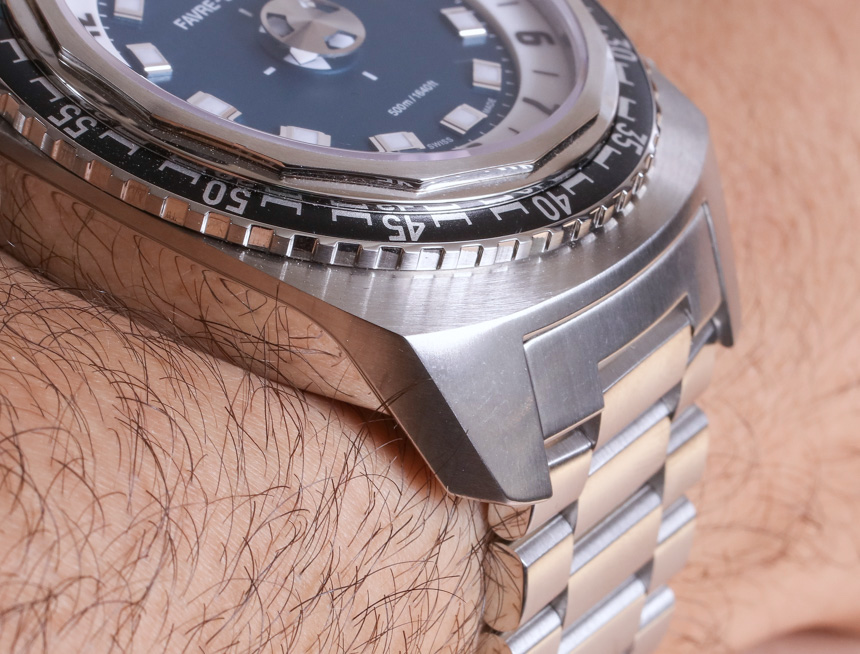
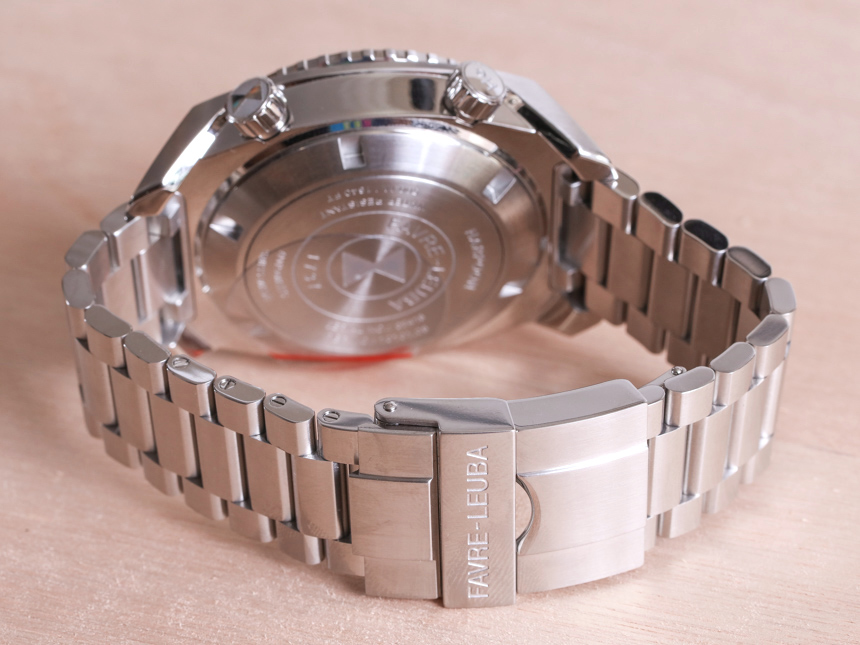
Speaking of the bracelet, it is nice for being otherwise rather simple. Favre-Leuba doesn’t break ground on design when it comes to the bracelet, instead opting to do a more retro look with a nice degree of quality. That means solid links, use of screws to secure the links, a substantial (not flimsy – Seiko could learn something here) deployant that is also not too thick, and a simple but effective diver’s extension clasp.

The bracelet even tapers just a little bit – enough to be effective. It is 24mm wide at the lugs, and that narrows down to about 22mm where it meets the deployant clasp. I do wonder what others feel about the bracelet. Like I said, at first I dismissed it as being on the simple side, but as I spent more time looking at it, I appreciated all the ways it could have gone “cheap.” And yet, it maintained a nice level of construction detail while still trying to be something classic and retro-looking. The bracelet, with its high degree of link articulation, is also a good choice for those with smaller wrists.
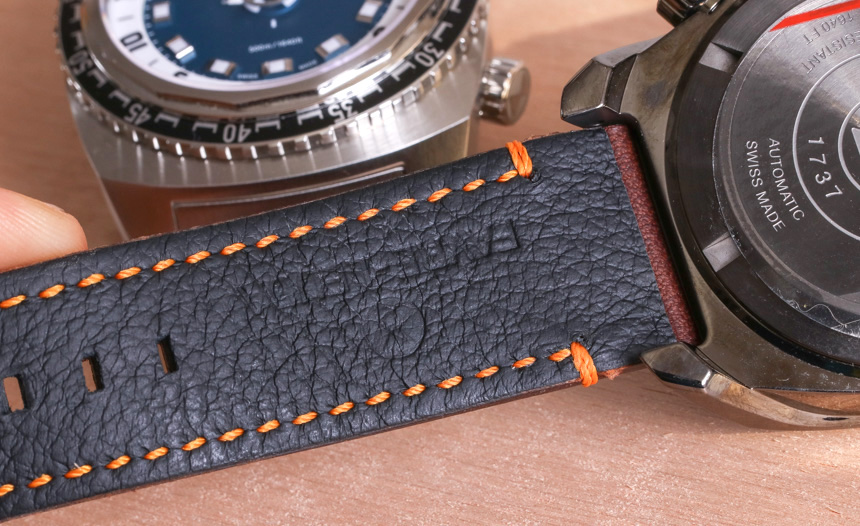
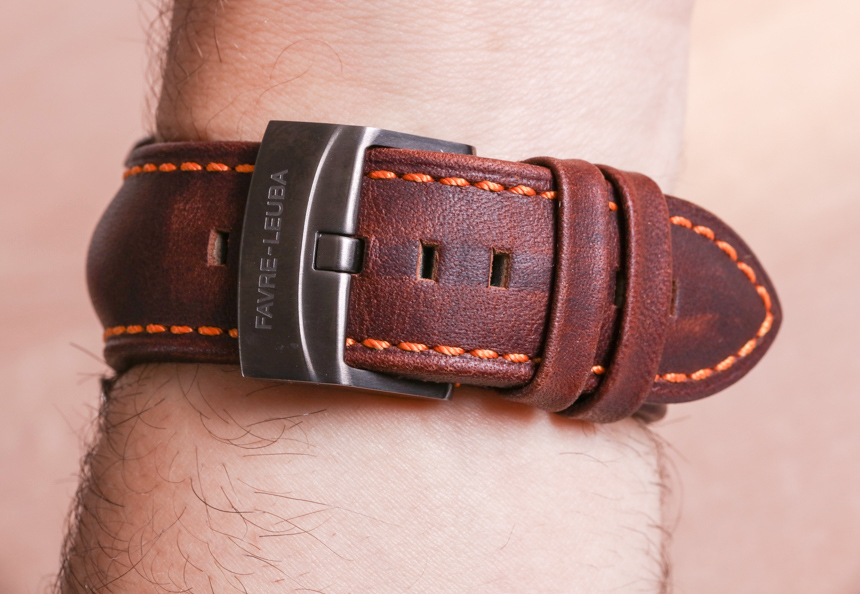
Strap options for the Raider Harpoon include two leather straps (either an ox blood-style brown or black, with orange or blue contrast stitching depending on the strap in order to match the dial color) as well as a custom Favre-Leuba-branded natural rubber strap. The latter is the best choice for the guy who is actually going to get wet (including sweaty) with this watch on.
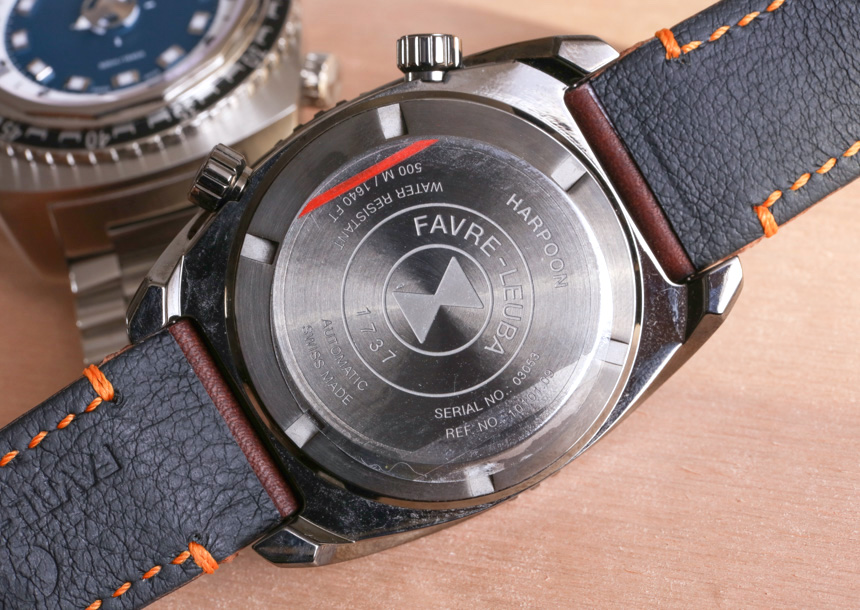
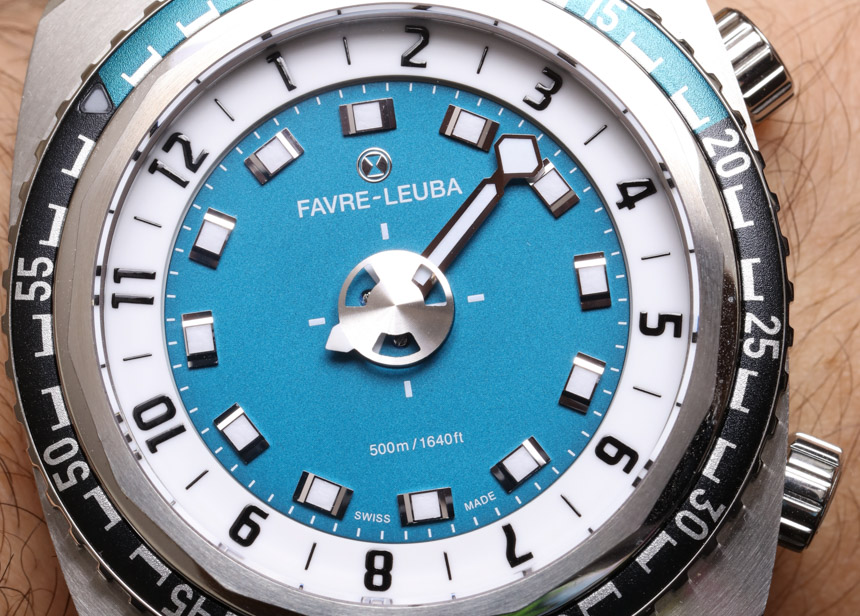
Finally, we approach the subject of the manner in which the watch indicates the time, as well as the movement that powers it. For the latter point, the automatic mechanical movement begins life as a base Swiss Sellita SW200. It is later modified with the “Favre-Leuba hour indication system” (as of now Favre-Leuba for some reason doesn’t have a name for the system, and in my opinion this system most certainly needs a title). The resulting automatic movement is known as the Favre-Leuba caliber FL 301, and it operates at 4Hz (28,800bph) with 38 hours of power reserve. The slightly lower than anticipated power reserve is likely an outcome of the movement having to drive a ring for the hours as opposed to a hand (which would be lighter in weight).
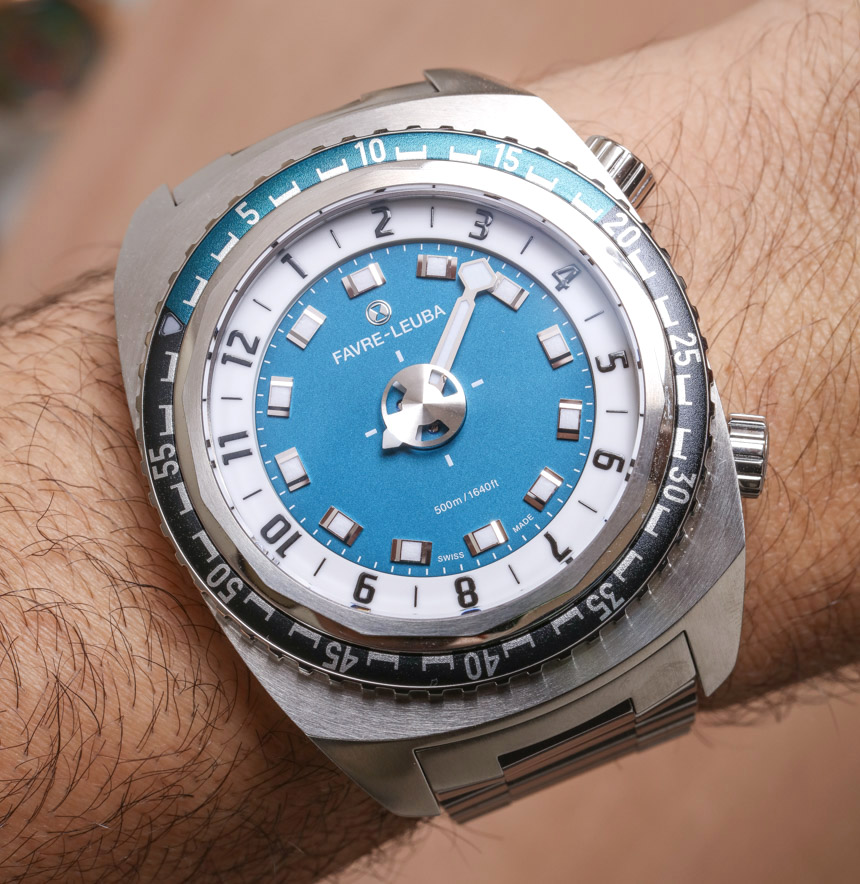
It takes a moment looking at the dial for most people to realize there is something “different” going on. Even when given some time to consider the dial, many people don’t know how to read it (which I found to be an interesting experiment). The dial concept however is rather simple, but the system is unexpected in how it works. Overall I love the system, but it does take some getting used to as you need to re-train the order in which your brain is accustomed to reading time-related information.
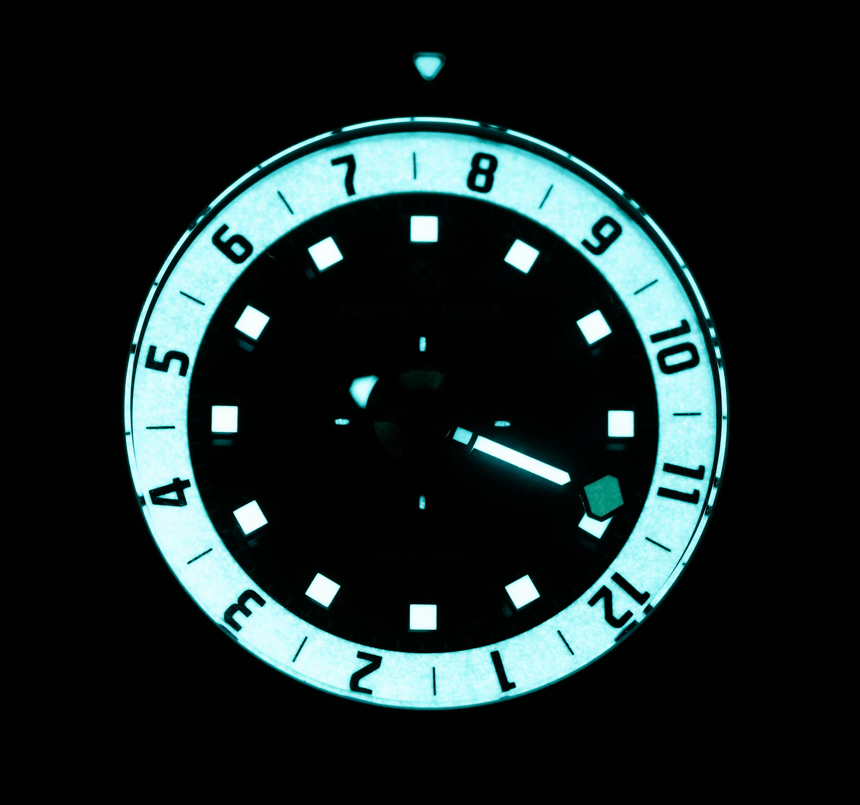
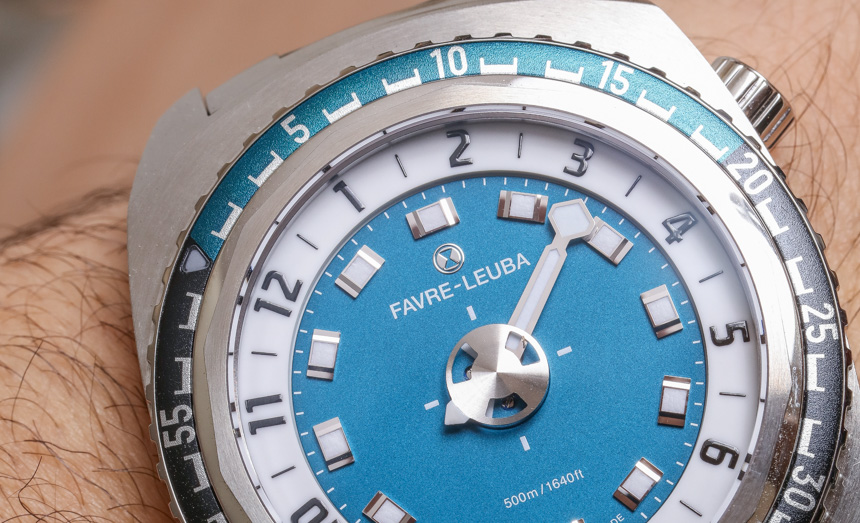
The time-only dial works as such; in the center of the dial is a small rotating disc with holes in it and a small white pointer. That (often mistaken as the hour hand) is the seconds hand. Outside of it is the longer diamond shape-tipped hand which is the minutes hand. It points to two things, and this is where the system makes itself interesting.
The minute hand first points to an attractive polished and applied minute marker (which looks suspiciously like an hour marker), and second to the hour indicator ring. Yes, the hours are indicated on a ring, but what makes the watch neat is that you read the hours at the same position that the minute hand is. Thus, as the minute hand moves, so does the hour disc, but at a slower rate. This ingenious solution is something I first saw in a concept watch by Martin Braun, but I’ve never seen it industrialized prior to Favre-Leuba.
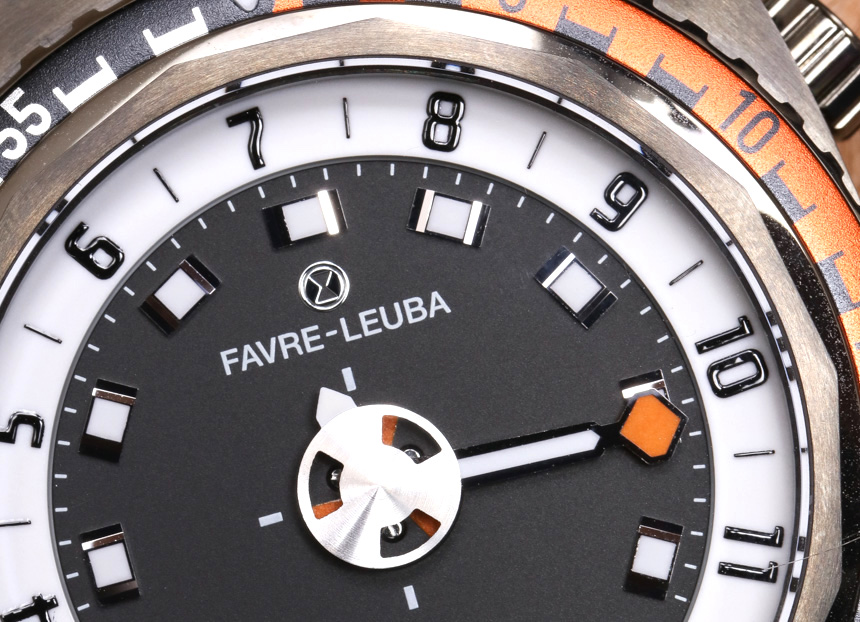
The reason you need to re-train your brain is because in a sense, the system on the Raider Harpoon requires you to read the time backwards. Normally on a watch you would first look at the hour hand and then at the minute hand. This is because your brain wants to know the hour first, and then the minute – this is natural since it is how we order time information in our minds. The Raider Harpoon on the other hands asks us to do the opposite. By virtue of the design, you need to first look at the minute hand because it is needed to point to the correct hour. Thus, the watch asks you to read the minute and then the hour, which then needs to be reversed in your mind. Of course you could look at the minute hand, then to the hour hand, and then to the minute hand again…. but the point is simply that reading the time this way is different, and for some people will take a moment longer than the traditional hour and minute hand system.

With that said, I don’t want to dismiss the manner in which the Raider Harpoon indicates the time as a less efficient novelty just yet. While in many applications the system might not offer a clear benefit over a traditional two or three-hand dial, I think in some contexts this hand system is superior. In diving for example the minute hand is often what one wants to look at prior to the hour hand. I think time and experimentation will tell us where something like the Favre-Leuba Raider Harpoon is the preferred choice.
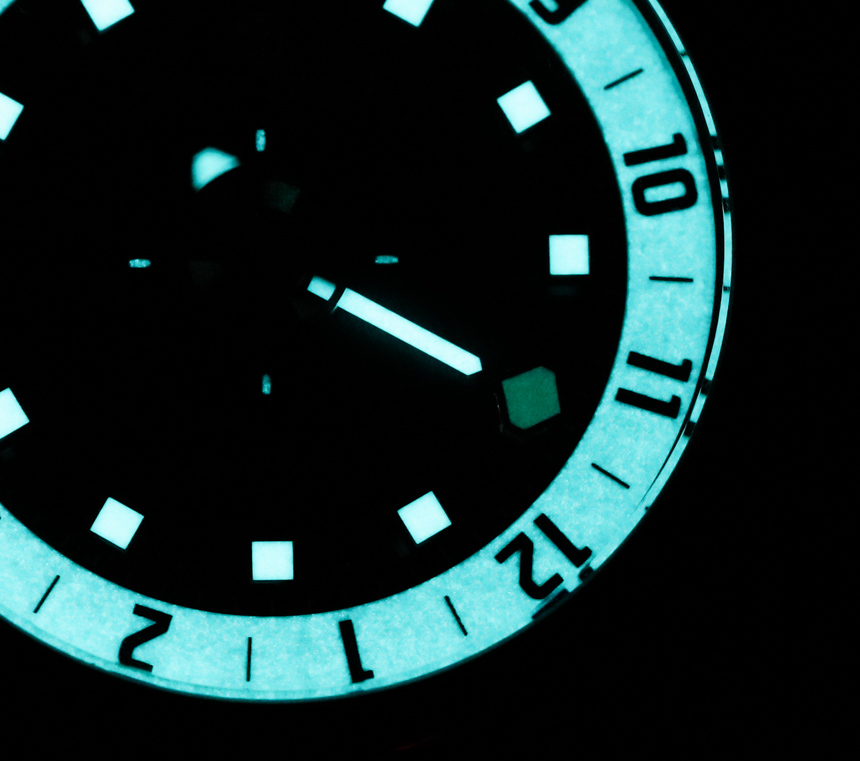
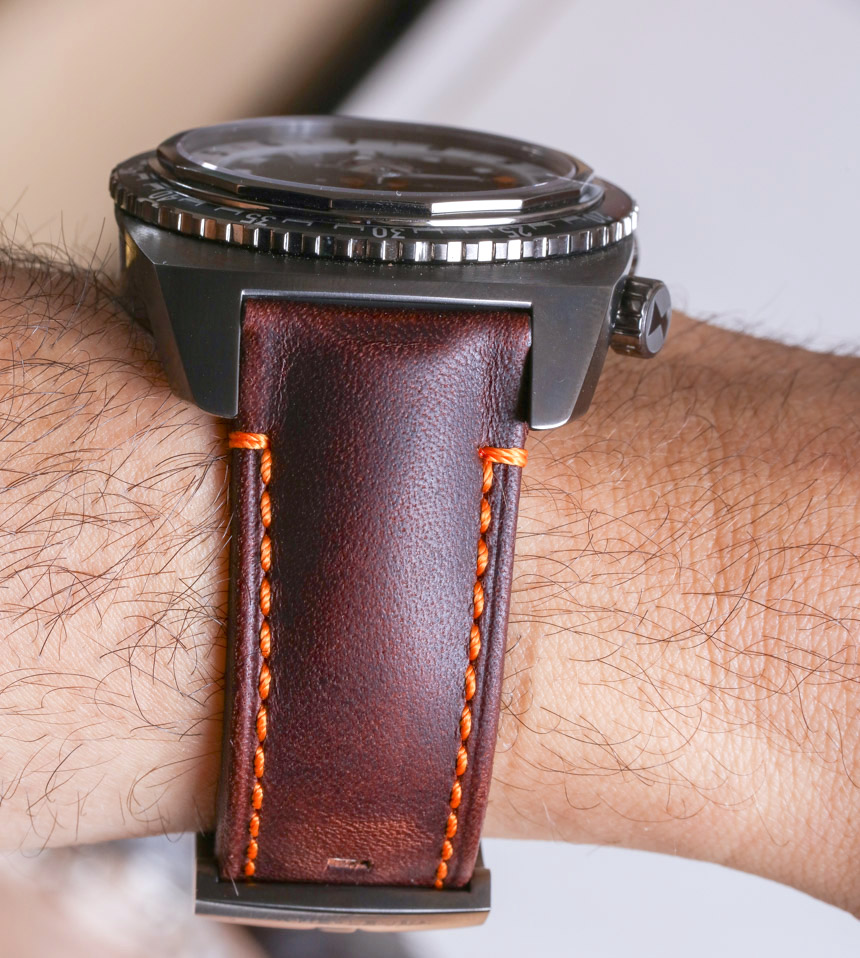
What excited me the most about this time system is how Favre-Leuba will continue to adapt and play with it. If I was in Mr. Morf’s position, I would order constant design studies on how to make more refined sport watches, or even dress-style watches with this hand layout. For example, one can claim that on the Raider Harpoon the hour ring is difficult to understand since it looks like a fixed chapter ring in white. The reason it is white is because it is in luminous material for darkness viewing, but there is a point to calling a bit more attention to this feature. There might even be an opportunity to design another disc underneath it that can highlight the particular “active” hour that the minute hand is currently dragging behind. What I’m saying is that the particular time indicating system here is robust and interesting enough for lots of future development.
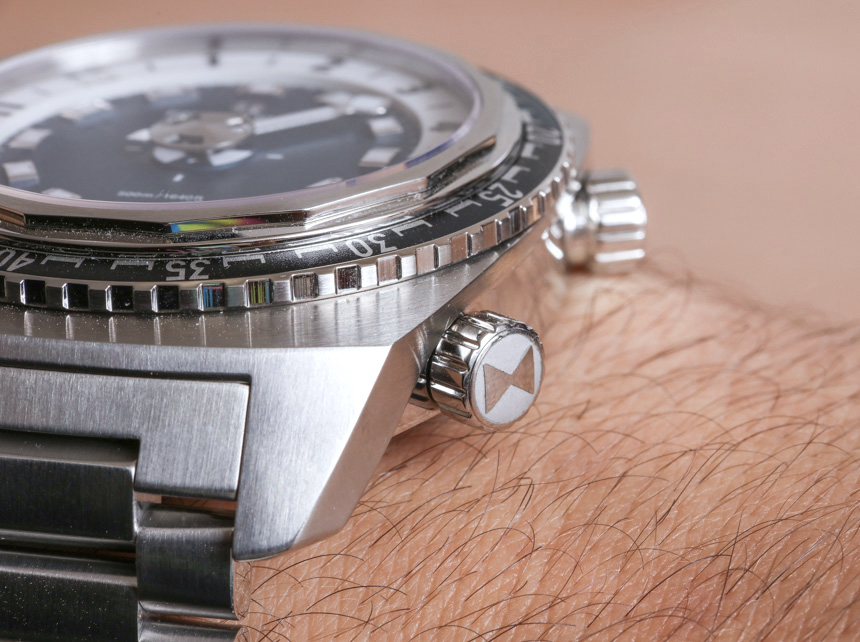
As mentioned above, the Raider Harpoon is a niche-appeal product, but it doesn’t lack an eager demographic of buyers. If you are like Thomas and like bold, slightly retro, with a historic name on the dial, and mechanically interesting sport watches, then you too might dig the Raider Harpoon. It isn’t even the most exotic Favre-Leuba in production right now – that honor likely goes to the Favre-Leuba Raider Bivouac 9000, which has a built-in barometer (at a “reasonable” price).
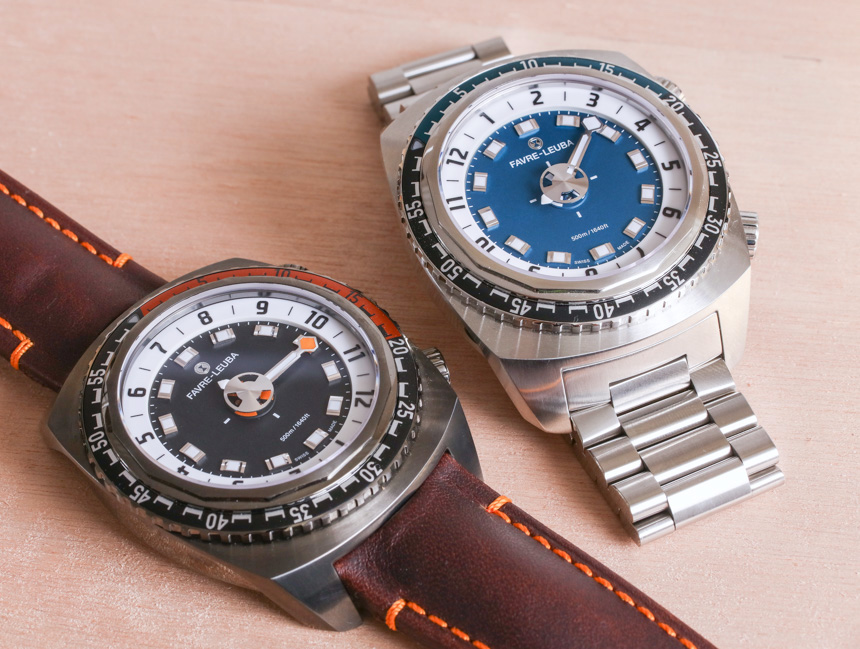
In today’s watch market where brands must be interesting, prestigious, distinctive, and bold, Favre-Leuba is hitting a nice stride. Strongly backed and capably staffed, Favre-Leuba is available both in stores and online (at least in some markets such as the USA). It isn’t the brand for everyone, but with its clear direction and personality it is the type of brand the watch industry needs today. The Favre-Leuba Raider Harpoon watch is priced between $4,600 and $5,150 depending on the strap and case color combination. The two tested models are priced at $5,000 for the PVD black case on a leather strap and $5,150 for the natural steel case on the matching steel bracelet. favre-leuba.com
Necessary Data
>Brand: Favre-Leuba
>Model: Raider Harpoon
>Price: $4,600 – $5,150
>Size: 46mm wide
>Would reviewer personally wear it: Yes.
>Friend we’d recommend it to first: Thick-wristed retro-sport watch lover that needs some mechanical quirkiness to give their timepieces a personality they feel a luxury watch requires prior to purchase.
>Best characteristic of watch: Lots of personality in an interesting watch from an authentically historic brand (albeit brought back to life in recent years). Novel system to tell the time remains fun and interesting – though indeed quirky. Colors are attractive given the theme. Welcome application of AR-coating on both sides of the crystal.
>Worst characteristic of watch: Rather large case (when it doesn’t per se need a larger case) makes it less likely for wide appeal. Too easy for novices to not understand how to read the time without explanation. Time indication system requires a mental adjustment period.

